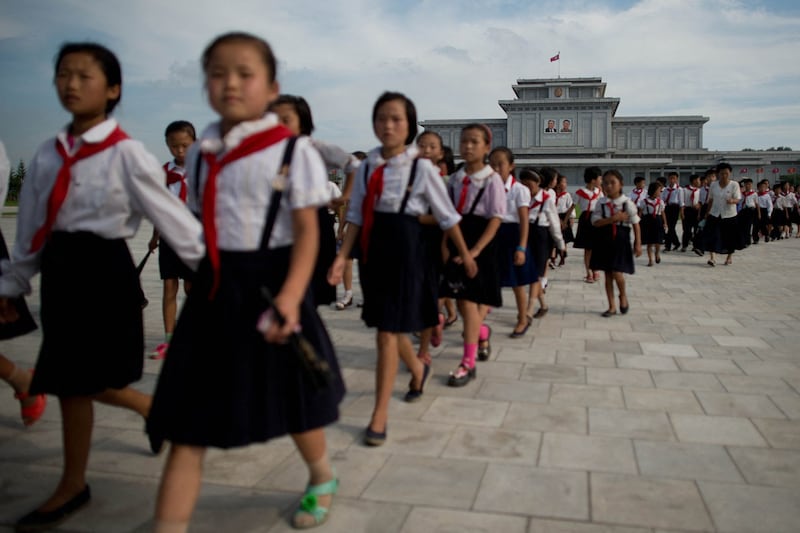North Korea is building new clothing factories due to increased demand for school uniforms, but the factories threaten to kill off a cottage industry of small, often family-run school uniform makers, residents told Radio Free Asia.
More school uniforms are necessary because authorities are pushing development of STEM education nationwide, and new schools to train new teachers are opening in each province. Students attending the new schools must wear uniforms that match their peers, and there simply are not enough to go around.
One such factory was completed in October in the northeastern port city of Chongjin.
“It is true that the construction of a school uniform factory is a measure for students, but some residents are anxious,” a resident of Chongjin’s surrounding North Hamgyong province told RFA Korean on condition of anonymity for security reasons.
“There are many people in Chongjin who make money by making various clothes using Chinese fabric,” she said. "They hire several women to process clothes. It’s like running a small factory.”

North Korea had state-run clothing factories that produce school uniforms in the past, but following the 1994-1998 famine and economic collapse, many of these factories lacked the raw materials and labor necessary to make the uniforms.
Since that era, rapid inflation meant that most families could not survive on the salary provided by government-assigned jobs, so many North Korean families had to start businesses trading goods and services in the local marketplace. These days, most families make their livelihood this way.
With school uniforms no longer being pumped out in factories, entrepreneurial residents took it upon themselves to fill the void in the market.
But now the government’s new factories threaten to kill their market share.
Anxious outlook
It isn’t only the small business owners that are worried about the new factories. Their workers are also afraid.
During the COVID-19 pandemic, imported fabrics and zippers from China were hard to come by, and the uniform makers had to temporarily shut down their operations.
“Women who used to work steadily [making uniforms] have been unable to make money because their work has stopped for the past three years when the border was blocked,” the resident said. “They are afraid of the completion of the school uniform factory.”
The new factories will make more than only uniforms. So people making other kinds of cloth goods are also worried, the resident said.
“Last year, the Chongjin Bag Factory was also opened,” she said. “Many people will lose their livelihood due to the school uniform factory and the bag factory.”
In addition to the Chongjin uniform factory, another school uniform factory was recently completed in the city of Rason, about 100 kilometers (62 miles) away.
"They were built by the province itself without central support," a resident there told RFA. "Clothes processing equipment, such as cutting machines, sewing machines, and ironing machines, were brought in from China by the provincial trade bureau."
He said that the province rushed to open these factories and they are not yet completely finished.
“This is because the completion is delayed compared to other provinces,” he said. “Everything is a regional competition.”
Clothing produced by the state-run factories is generally lower quality, so residents may still want to buy their uniforms from the private makers, the he said.
In April, at the start of the school year, students were given factory-made uniforms said to be gifts from the country’s leader Kim Jong Un, the second resident said.
“[They] looked good, but the quality was pathetic,” he said. "Although there are school uniforms given by the government, there are many parents whose children are begging them to buy the nicer school uniforms sold at the market,” the source pointed out.
Translated by Leejin J. Chung. Edited by Eugene Whong and Malcolm Foster.
